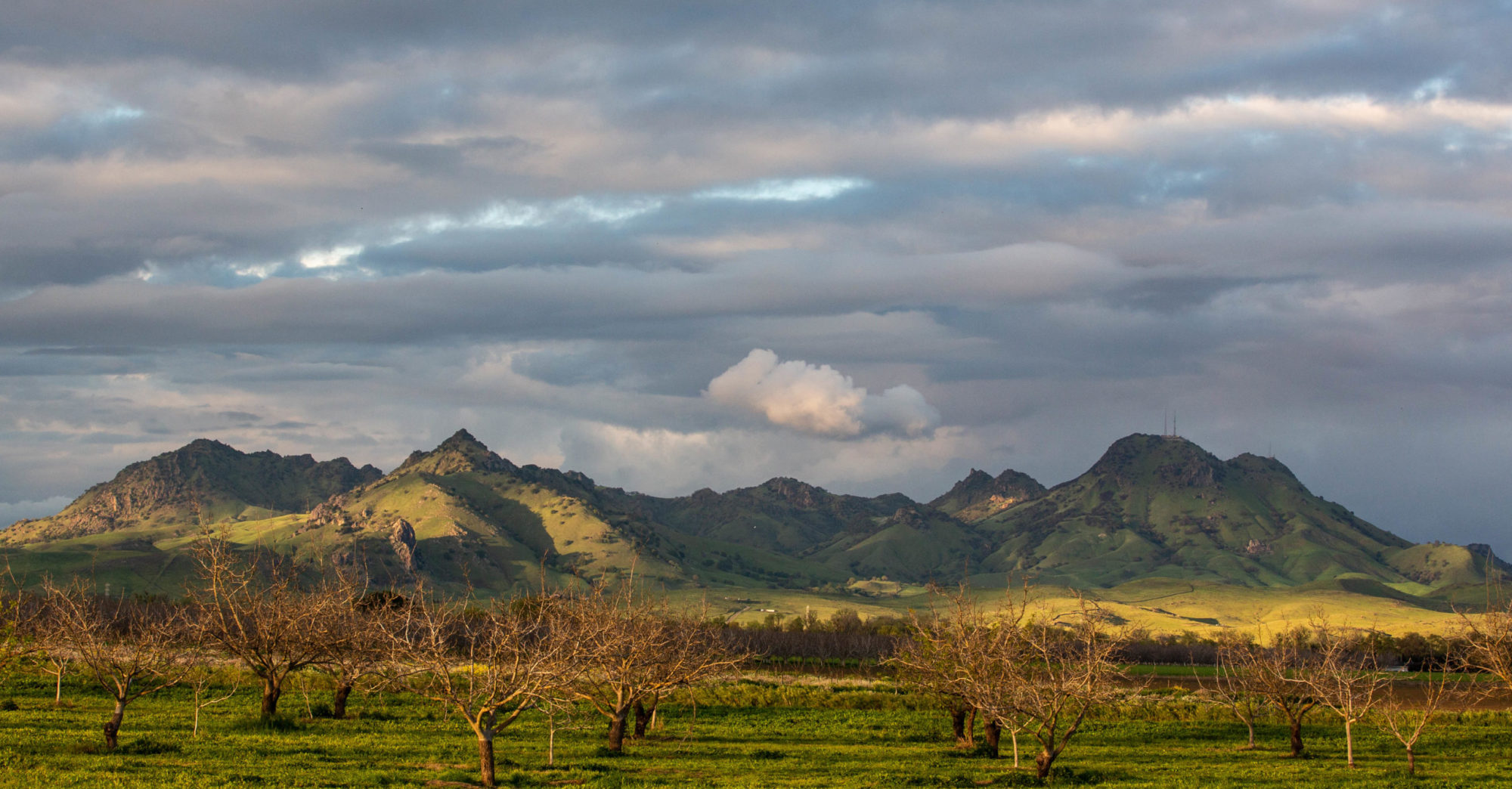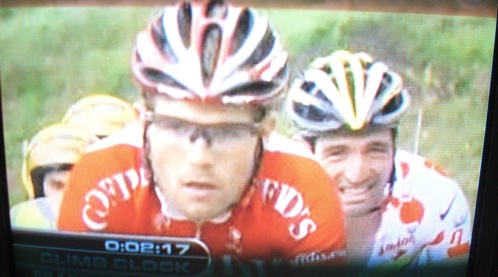Today’s stage — the 15th already — was terrific in a way that only a mountain stage can be. The race leader going into the day, the Australian Cadel Evans, was only one second ahead of his nearest rival; another half-dozen or so riders were within two minutes. Evans’s Silence Lotto team appears to have no ability to protect him in the mountains. That idea of protection or having a strong team is often referred to in this grand tour racing. It’s not immediately evident what it means when you casually watch a stage, and even after you’ve gotten the hang of how racing is supposed to work, there’s part of the idea of team racing that seems a bit illogical. After all, the result at some point comes down to an individual rider’s ability to finish fast enough often enough that he makes it to the top of the standings. But the idea of team and protection is real and important, and here’s how it comes into play on a stage like today, which featured two big climbs, climbs of the caliber that stripped all the flat-land sprinters and bit players out of the race very early:
It’s true that Evans and every one of his competitors is riding alone. At the end of the day, their time is their time, and no one can make them go faster if they don’t have the stuff. One of the great and devastating examples of that truth is Floyd Landis’s ride in the Alps on Stage 16 in 2006. Not the heroic, (apparent) Tour-winning ride, but the one he did the day before. Under pressure to keep up with the men who were following him in the standings, Landis “cracked” — he couldn’t make himself go any faster as his rivals sped away up the final mountain of the day. He had a teammate with him most of the way up the last climb, a teammate who mostly served as a witness to the shocked looks of other racers passing Landis, who lost the yellow jersey as a result of the disaster. Having strong, faithful teammates was useless to him.
The other side of the coin is Lance Armstrong, who in most of his winning Tours was accompanied by a cadre of fast, aggressive, and courageous riders (Landis among them). What good did they do him? Well, on flat ground, they could offer some physical protection by staying close to their team leader. They could set the pace of the race, ratcheting up their speed to bring back dangerous breakaway bids or calming things down when necessary. But the modern Tour is a race won on the mountain stages, and the team can play a much more dramatic role there. That’s because in a close Tour, any racer with a hope of winning needs to climb reasonably well and needs to be ready to both attack (try to accelerate away from his opponents) and defend (discourage attacks by responding to them). To win the Tour, a racer must be able to do one or the other reasonably well; both would be better. When the enemy attacks, you get on his wheel and stay there. When he’s showing an instant of weakness, you attack and test his ability to grab your wheel. (It’s so much easier to sit in a room in Berkeley and write about this than to do it.)
It follows that it’s an advantage not to have to do all the attacking and defending yourself. As Armstrong and others showed time after time, it’s a huge advantage to have teammates around you on the climb who can discourage attacks by setting a fast pace, can respond to the inevitable attack when it comes, or can pace the leader back to a group if he weakens or if an attack gets away. Just as it’s an advantage to have a slew of comrades to help you in this combat, it can be a distinct disadvantage to have no one to work with. Especially, as in Evans’s case, when you’re wearing the yellow jersey and have just a one second lead in the race.
To cut to today’s chase, Evans arrived at the last long climb of the day with a small-ish group of riders that included virtually every one of his close rivals. As soon as the climb began, the one or two Evans teammates who had stayed with him onto the mountain quickly fell behind. That left him alone. But it was worse than that. In the group with him were four riders from a single team, CSC. One of the four was Frank Schleck, the man who trailed Evans by a second. Another was Frank’s brother Andy. A third was Carlos Sastre, a strong climber less than a minute and a half out of the lead. The fourth was Jens Voigt, a German who had no hope of winning the climb but who was there to pound out a fast pace as long as he could.
Soon Voigt was gone and Evans was left with the three other CSCs and a handful of others near the top of the standings (including Russian Dennis Menchov and Chicago native Christian Vande Velde). All the way up the climb, Evans’s opponents took turns attacking. He responded to every one. Finally, Menchov burst out in front in what looked like a decisive attempt to get away. But that venture came to nothing when he slipped and fell on the steep wet road and remounted as the group rode by. Sastre and Andy Schleck repeatedly broke from the group, forcing Evans to try to hang on to them. On the upper slopes, Sastre, Menchov, Spaniard Alejandro Valverde and German Bernard Kohl finally got away, leaving the Schlecks, Evans and a handful of others behind. In the last kilometer, Frank Schleck finally blasted away, too. Evans, having absorbed blow after blow all the way up the mountain, finally faded. He finished 47 second seconds after Kohl and Sastre and nine seconds after Schleck. With the racers packed so close together, that was enough to push him from first to third (Frank Schleck is first, Kohl second–for now).
The good news for Evans: tomorrow’s a rest day. The bad news: More Alps Tuesday and Wednesday, and still no team to ride around him.
Technorati Tags: cadel evans, tour de france
Like this:
Like Loading...


